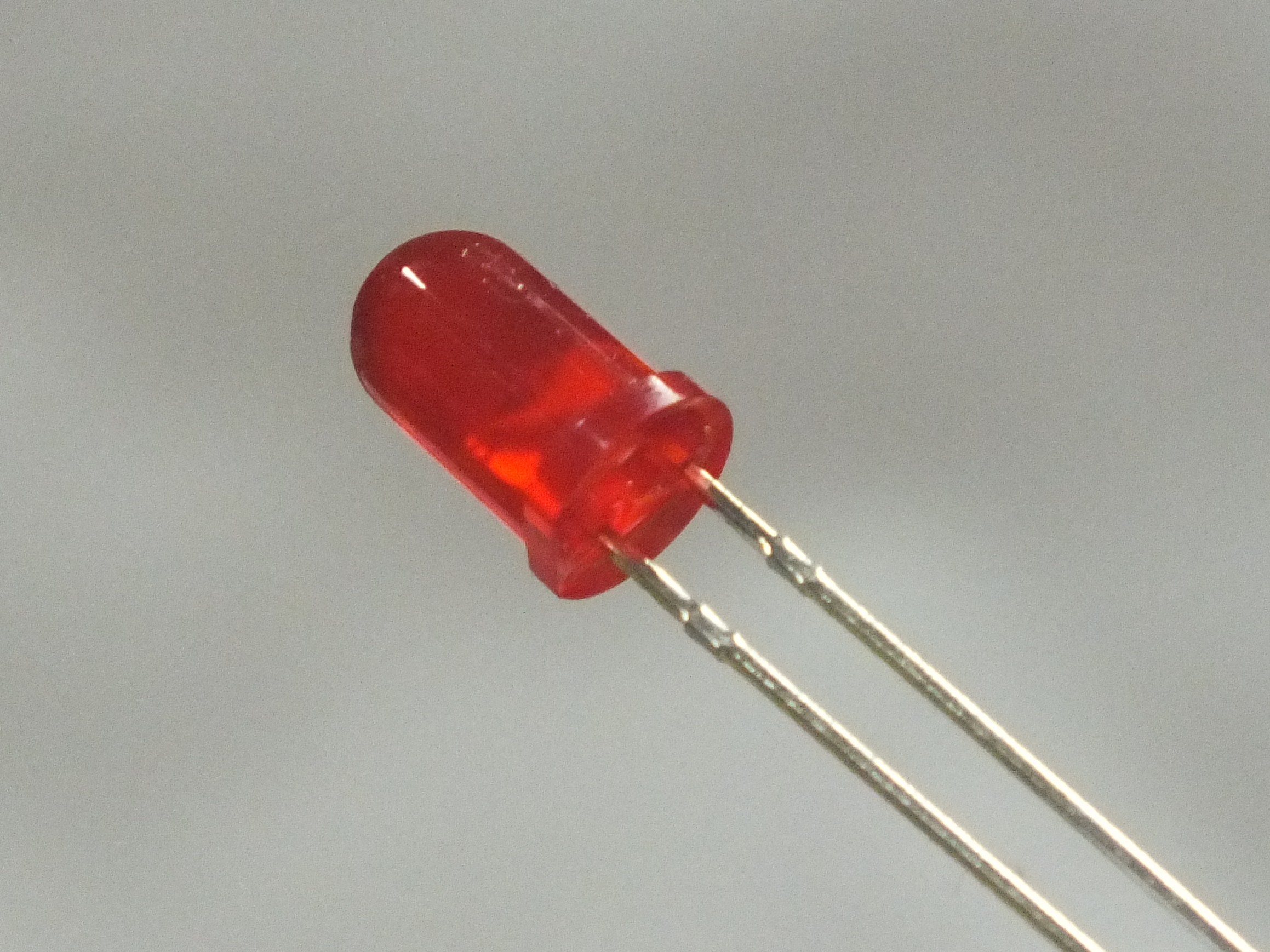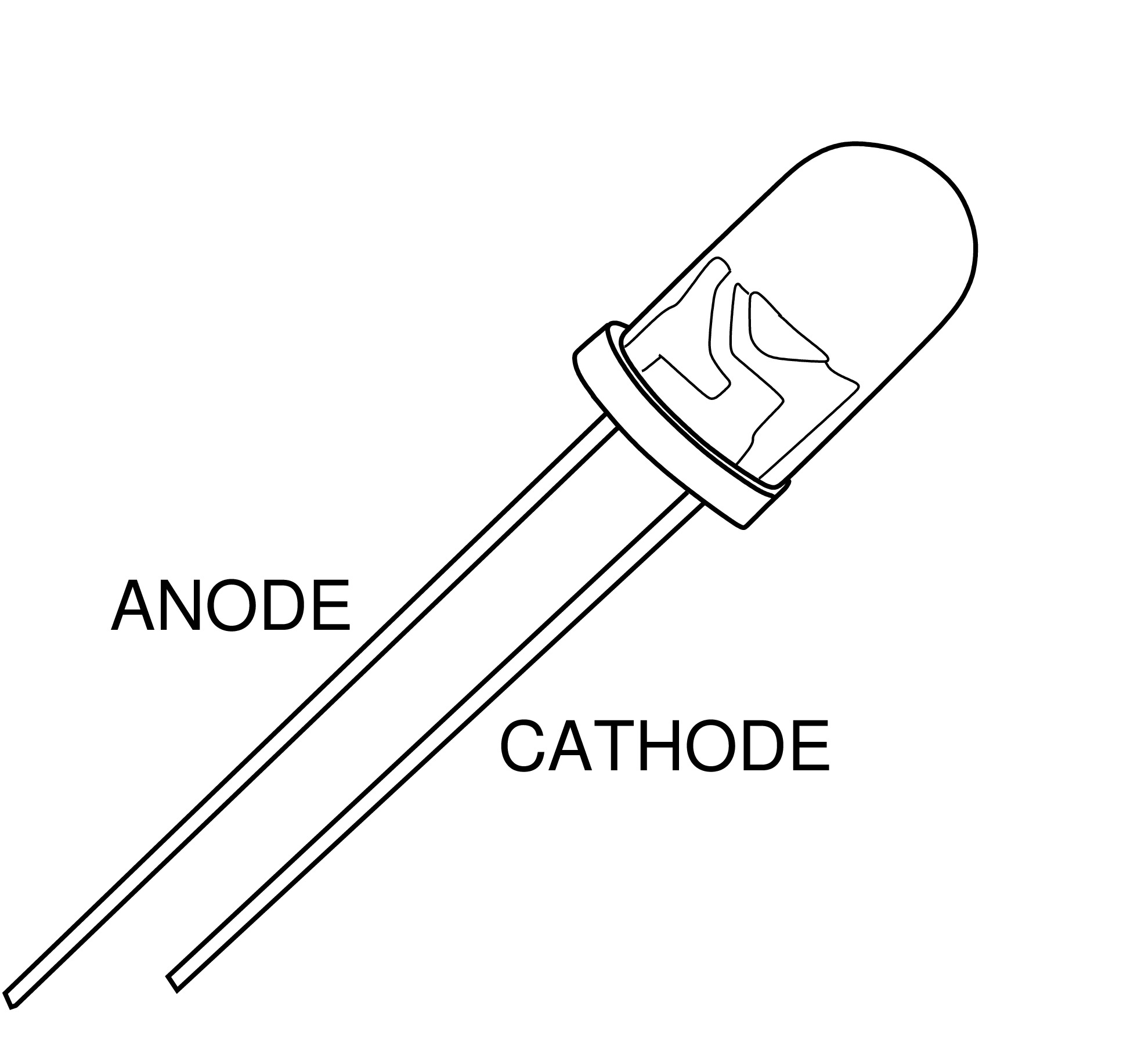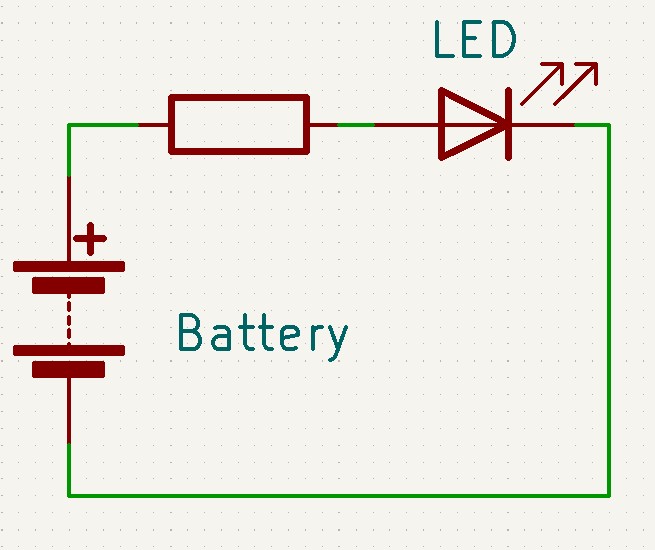Using LEDs

Light Emitting Diodes, or LEDs, are a type of semiconductor device that emits light when an electrical current is applied. They are widely used in a variety of applications, including electronic displays, lighting, and signaling.
LEDs come in a variety of shapes, sizes, and colors. The most common type of LED is the standard 5mm LED, which is widely available at most electronics stores - see the Bitsbox LED shop category here. You can also purchase RGB LEDs, which can display different colours, and high-power LEDs, which are used for lighting applications.
Once you have your LED, you will need a power source and a resistor to use it. The power source can be a battery or a power supply, and the resistor is used to limit the current flowing through the LED to prevent damage. The value of the resistor will depend on the power source voltage, and the forward voltage drop (Vf) and maximum current (If) of the LED. Consult the published data for the LED to find these figures.You can use an online calculator or the following formula to arrive at the minimum series resistance figure.
Rmin = (Vsupply - Vf) / Ifmax
For example, if you are using a 9V supply, a LED with a forward voltage drop of 2V and 20mA maximum continuous forward current, Rmin = (9 - 2)/0.02 = 350 Ohms. Note that this is a minimum value, the actual value you use is not particularly critical so long as it is higher than 350 Ohms. 470 Ohms (470R) might be a value you would choose here.
Next, you will need to connect the LED to the power source and resistor. The positive terminal of the LED is called the anode, and the negative terminal is called the cathode.

The anode is typically identified by a longer lead. The cathode is typically identified by a shorter lead. The anode should be connected to the resistor, and the cathode should be connected to the negative supply (ground). The other end of the resistor should be connected to the positive terminal of the power source. The positions of the LED and resistor can be reversed in the circuit, if necessary. Note the symbol used to denote the LED in the diagram below.

Once the LED is connected, you can apply power to the circuit and the LED should light up. If the LED does not light up, double-check your connections and make sure the polarity of the LED is correct i.e. check it's the right way round.
In conclusion, using an LED is a simple process that requires a power source, a resistor and a LED. By following these steps, you should be able to successfully use an LED in your next project.
